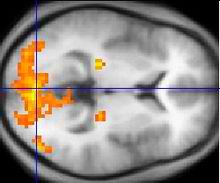Theories of Aspergers
What are some of the prominent theories that attempt to describe Aspergers?
Aspergers appears to result from developmental factors that affect many - or all - functional brain systems. Although (a) the specific underpinnings of Aspergers that distinguish it from other Autism Spectrum Disorders are unknown, and (b) no clear pathology common to people with Aspergers has emerged, it is still possible that Asperger's mechanism is separate from other Autism Spectrum Disorders. Several theories are available, although none are likely to provide a complete explanation. Below are the current theories with the most credibility:
1. Neuroanatomical studies and the associations with teratogens (see “What is a teratogen?” below) strongly suggest that the mechanism behind Aspergers includes alteration of brain development soon after conception. Abnormal migration of embryonic cells during fetal development may affect the final structure and connectivity of the brain, resulting in alterations in the neural circuits that control thought and behavior.
2. The mirror neuron system (MNS) theory hypothesizes that alterations to the development of the MNS interfere with imitation and lead to Aspergers core feature of social impairment. For example, one study found that activation is delayed in the core circuit for imitation in people with Aspergers. This theory maps well to social cognition theories like the theory of mind, which hypothesizes that autistic-like behavior arises from impairments in ascribing mental states to oneself and others (called hyper-systemizing), which hypothesizes that people with Autism can systematize internal operation to handle internal events but are less effective at empathizing by handling events generated by other agents.
3. The under-connectivity theory hypothesizes under-functioning high-level neural connections and synchronization, along with an excess of low-level processes. It maps well to general-processing theories such as weak central coherence theory, which hypothesizes that a limited ability to see the big picture underlies the central disturbance in Autism Spectrum Disorders.
 |
| Functional magnetic resonance imaging provides some evidence for both under-connectivity and mirror neuron theories. |
4. A related theory, called “enhanced perceptual functioning,” focuses more on the superiority of locally oriented and perceptual operations in people with Autism.
5. Other possible mechanisms include serotonin dysfunction and cerebellar dysfunction.
What is a teratogen?
A teratogen is any agent that can cause a birth defect. It is usually something in the environment that the mother may be exposed to during her pregnancy. It could be a prescribed medication, a street drug, alcohol use, or a disease present in the mother which could increase the chance for the baby to be born with a birth defect. About 4 to 5 percent of birth defects are caused by exposure to a teratogen.
Once the egg is fertilized (conception), it takes about six to nine days for implantation (anchoring into the uterus) to occur. Once the fertilized egg is connected to the uterus, a common blood supply exists between the mother and the embryo. In other words, if something is in the mother's blood, it can now cross over to the developing fetus. Teratogens are thought to have the ability to affect the fetus about 10 to14 days after conception.
During the development of a baby, there are certain organs forming at certain times. If a teratogen has the potential to interfere with the closure of the neural tube, for example, the exposure to the teratogen must occur in the first 3.5 to 4.5 weeks of the pregnancy, since this is when the neural tube is closing. There are some organ systems that are sensitive to teratogens throughout the entire pregnancy, such as the central nervous system. The central nervous system is the baby's brain and spine.
One teratogen that affects the central nervous system is alcohol. Alcohol, at any time during the pregnancy, has the potential to cause birth defects and health problems in the baby, since the central nervous system is sensitive to teratogens the entire nine months of gestation. This is why alcohol consumption should be avoided in its entirety during pregnancy.
There are many different teratogens that cause birth defects. Listed below are a few examples:
• Acetaminophen
• Alcohol
• Microwave ovens
• Phenytoin (Dilantin)
• Prenatal vitamins
• Spermicides
• Varicella
==> The Aspergers Comprehensive Handbook


